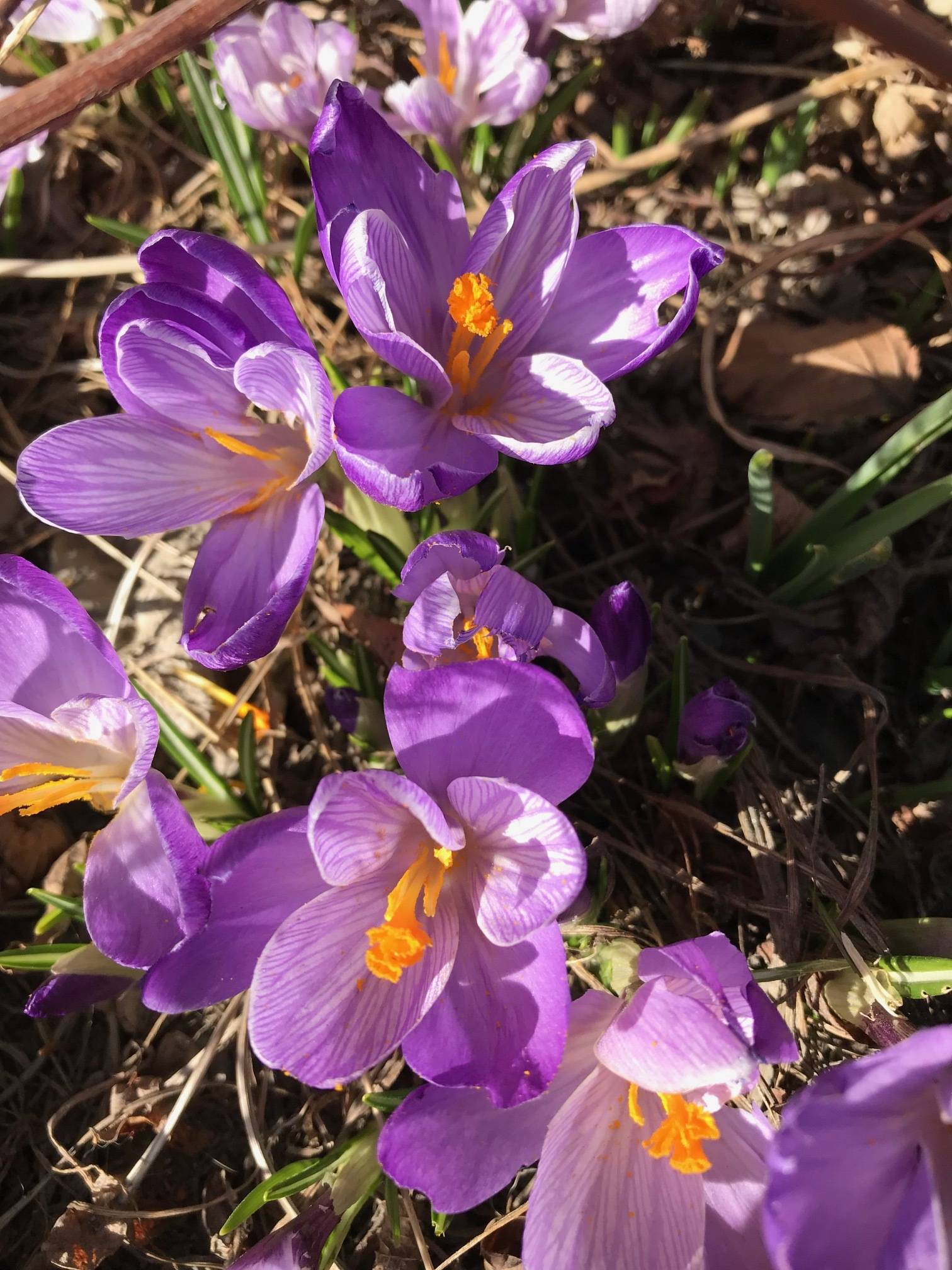Sunday, April 8, was the day. It actually felt and smelled like spring. We’ve made it.
I started the process of cleaning off last years spent foliage from the perennial beds. This material is left on as a mulch to protect plants from the freeze-thaw cycle that is experienced this time of year. The hope is that those low 20 temperatures are over. Even so, the plants that are thriving in these beds are tried and true and can tolerate fickle spring weather.
I am so done with plants that need coddling. There will be a major make-over in these beds as soon as they can be worked. Out with anything that makes me worry and in with solid performers.
This is why I uncovered the beds. I want to see the crocus, not have them buried under delphinium stalks in an effort to keep the Foxy foxgloves alive. It seems every spring I almost miss out on the minor bulbs that are planted all over the place because I can’t see them in my attempt to keep everything else alive. Enough. Every single minor bulb cluster out there is showing promise. There will be later varieties of narcissus and tulips that will be coming on to extend the show; so be it. I’m ready now for what wants to shine.
If you left your foliage in situ and are ready for its removal just use your hands. And be gentle about it. You can easily pull out chunks of the plant and with the ground still partially frozen you won’t have too many options as to what to do with said chunk.
After the big material is removed and place on/near the compost, I gently run a rake over everything, removing most of the detritus. Just be easy and gentle with all of this. No hurry. You can go back over it again later when everything isn’t quite so fragile.
What a delight to see the green of campula Clips, the fresh shoots of delphinium, pink peony shoots. So many plants are showing signs of life. You may need to get down on your knees for complete appreciation — go ahead.
This is supposed to be the year that I cut down on annuals. Without fail I start too many. You would think that could be easily solved. I’ve tried. But as I sprinkle seed on the surface of moist potting soil I get carried away. So this year I didn’t even buy any annual flower seeds. None. No more godetia with the stems that break under the weight of its own the blooms. No more California poppy “Bridal Bouquet” that flop all over the place and need me to stake them before that happens but I never ever get to it in time. That is some intense resolve.
There I was, in the greenhouse, getting vegetable seeds started, a reasonable number of this and that for a family of two with “grands,” house guests, friends — this is how it happens —- too much of everything. Anyway, I’m rifling through my seed packets and there are all the annual flower seeds from last year. Well, there really aren’t THAT many cranberry cosmos left in the packet, or victorian posy, or linum rubrum. See what’s happening? You guessed it. I now have a zillion 3-inch square containers of moist potting mix with any number of varieties of annual seeds broadcast over the surface. Good grief.
How could I possibly make it through our ever so short summer without these lovelies? What was I thinking?
The tomatoes are happily planted in the bins in the greenhouse. The plants were laid on their sides and the stems covered with compost, watered in and wished well. Roots will develop along the stem and, hopefully, a nice stout plant will develop that will be capable of bearing up under the load of scads of tomatoes. What a vision.
The temperature in the greenhouse is holding at a low of 39 degrees. It’s the high that is bothersome. Even with the fan running this sunshine has really excelled at overheating the area. I have the vents open, even cracked the door. It is somewhat under control but not by much. There are four heads of lettuce that do not want a too-warm environment. The leaves get weak and lack flavor. The short row of radish with just 12 seeds planted will also appreciate cooler temperatures.
It doesn’t take much to heat a small greenhouse; this one is about 8-feet-by-15-feet. There are two electric space heaters out there that are coming on and off during the night. I figure this is a small price to pay for outrageously delicious produce.
Which is the point: good food that you have grown yourself and it isn’t all that much of a challenge. Keep in mind that humans have been gardening for centuries. This is your year.
Note: Kyra Wagner writes a delightful newsletter, Sustainable Homer, that arrives at your email inbox. It is stuffed full of all things Homer. It’s ever so easy to subscribe at http://eepurl.com/t2xJ1
Rosemary Fitzpatrick is a longtime Homer gardener and has been writing Kachemak Gardener since 1990.


